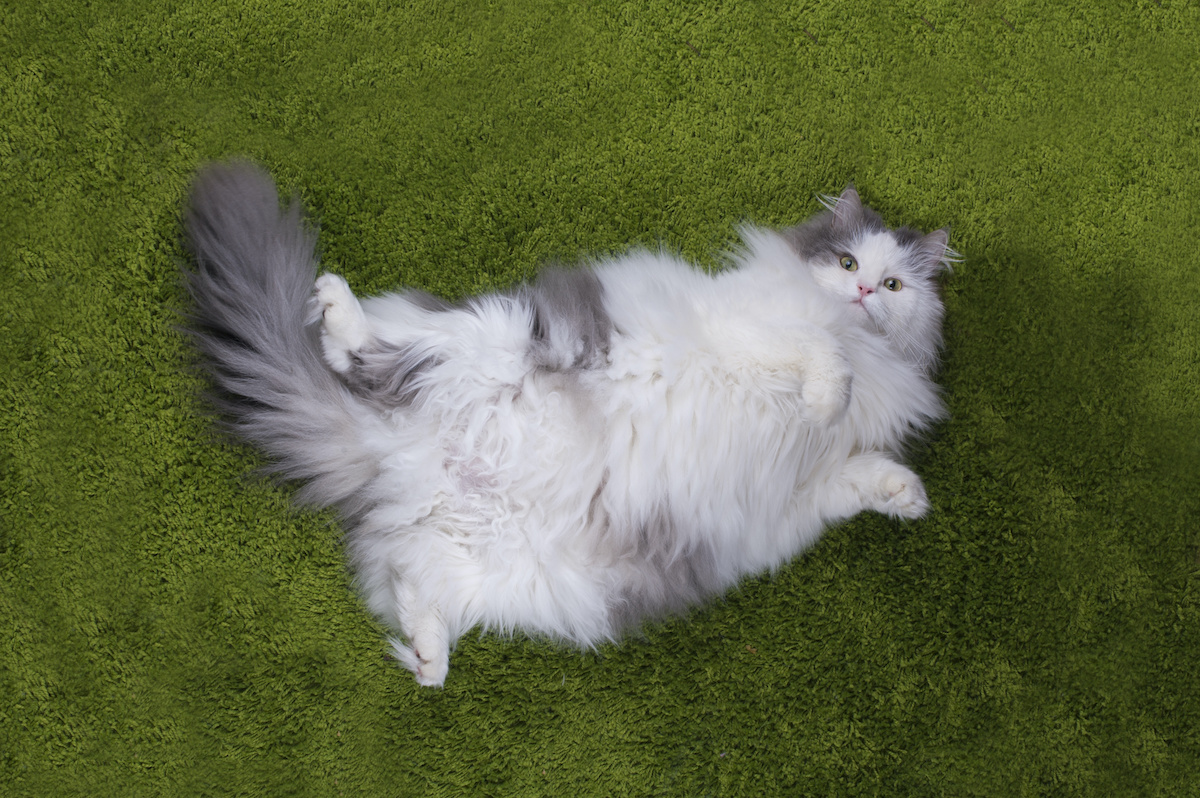It is well known that obesity is an epidemic in the United States. However, pet obesity is also a growing concern for our country as well.
In fact, according to the Association for Pet Obesity Prevention, 53% of adult dogs are overweight. Furthermore, 55% of adult cats are also overweight.
While some may believe that a roly-poly dog or cat might be cute, pet obesity is no laughing matter. It is just as harmful as human obesity, but the good news is that it is also preventable.
Here, we will provide insight on the matter of pet obesity, signs to look for, and prevention tips to keep your pup or kitty at a healthy weight.
What is Pet Obesity?
Pet obesity is a growing epidemic. Dogs are concerned as overweight when they are more than 10% above their body weight.
Pet obesity is also a disease. It has many associated effects which impact a pet’s quality of life and lifespan. Pet obesity is caused by an energy imbalance, but in reality, it’s far more complex.
Some factors that play into obesity are genetics, behavior and environmental factors. For overweight pets, losing even a little of the excess weight is a great help for a better quality of life.
Complications of Pet Obesity
When a pet is overweight, there are various health risks and complications that come with this condition.
Just like in humans, pet obesity puts a strain on your pet’s health. They can face issues including:
- Arthritis: It’s painful to watch a beloved pet struggle to move around and do daily activities. With extra weight, pressure is put on the joints while the cartilage deteriorates. This is what leads to arthritis. You may notice your pet struggling to stand up after taking a nap. Medication is available for pain, but losing weight can help with arthritis significantly.
- Cancer: Overweight pets can find themselves with various types of cancer, including breast and bladder cancer.
- Heart and breathing complications: Weight gain can lead to heart disease and high blood pressure. However, being overweight can cause breathing problems. In fact, overweight dogs are prone to collapsing trachea. This can lead to respiratory failure if left untreated.
- Tumors: Fatty tumors may develop on overweight dogs or cats. Many fatty tumors are benign but they can turn into something more serious down the road.
- Shortened lifespan: Perhaps the worst part of pet obesity is the shortening of lifespan. Dogs and cats that are overweight are at risk of this, which makes it all the more important to keep their weight in check. Even being moderately overweight can decrease a dog’s lifespan by two years.
- Skin disease: With extra weight often comes more folds in the skin. This is a prime place for irritation that is caused by bacteria. The scratching can lead to body odor as well as infection and skin redness. It is difficult if not impossible to groom an overweight dog effectively.
While these complications are unfortunate, the good news is that they are preventable. The next step is to look into preventing obesity and cats and dogs, which can improve the quantity and quality of their lives.
How can you treat or cure pet obesity?
If your pet is already overweight, there are several ways that you can help him or her lose weight and become healthier.
First, take your pet to the veterinarian to get a health evaluation. This will give you an idea of the overall health of your pet as well as their weight.
Your veterinarian can also rule out if there is any medical condition that is affecting your pet’s weight. Cushing’s Syndrome and thyroid problems can cause problems with weight.
Once you know the weight of your pet, your veterinarian can help you take action. There are several steps that your vet will likely have you do for your pet to lose weight.
There are several essentials that will help your pet safely lose weight the healthy way:
- Get an idea of how much you are feeding your dog or cat. You may need to take a day and go through the motions of feeding your pet. Think of everything that you give to them, including treats and even scrap food from the table. Every calorie adds up. Even though treats are small, they still count as calorie intake.
- Food selection: Just like humans, the majority of weight loss success comes with diet. With cats and dogs, it is mostly the same. Weight loss begins and ends with what you are putting in their food bowl. Be selective of what type of food you are feeding your dog or cat.
- Don’t always go by the nutritional guidelines on your pets food packaging. Different breeds and ages of animals have different calorie needs. Furthermore, spaying or neutering a pet will require them to take in 20 to 30% less energy. Less energy means a lower calorie intake. If your pet takes in too many calories, he or she will gain weight.
- Try breaking meals up into small portions throughout the day. If you only feed your pet once a day, consider feeding them two or three times. This can help them feel fuller.
- You also want to consider the food quality. Quality can make a big difference when it comes to weight maintenance and weight loss. Keep in mind that a lot of processed dog food contains fillers that are high in carbohydrates.
- To keep your pet feeling fuller longer, focus on nutrient dense foods that have a good balance of protein, carbohydrates, and fiber.
Pet Exercise for Weight Loss
The next step of weight loss in obese pets is considering the amount of exercise they get. When it comes to exercising dogs, a daily walk can help tremendously especially if you are not walking them at all.
In fact, walking your dog is not only good for his body but his mind as well. It allows him to get outside, explore the outdoors, and sniff around—exactly what dogs love to do!
If your dog currently does not go on walks, you will want to start slow. Ramping up to a strenuous exercise plan can lead to injury.
You can consider taking them on a short 10-minute walk to begin with. You can increase the duration by 10% to 20% each week. This can be specific to the age and physical condition of your pet.
But how do you exercise an overweight cat? The key with cats is to make it interactive and fun. You can try creating a hockey rink in a large cardboard box with a ball. You can give your cat a lawn, Which is a good alternative to using a laser. Some people are even able to walk their cats outside with proper training while giving a leash or harness a try.
You also don’t want to forget about the weather while you exercise your pet. Exercising during the midday hot sun can be just as dangerous for dogs as it can for people. Remember that people and pets are both prone to heat illness and heat stroke. Symptoms of heat illness can include excessive painting, confusion or even loss of consciousness.
If your pet is at a healthy weight, you have a slightly easier road when it comes to ensuring their health for the long term. This starts with preventing obesity in your cat or dog.
Preventing Pet Obesity with Healthy Food and Exercise
It doesn’t take much weight loss to yield significant health and well-being benefits in obese pets. But when it comes to pet obesity, prevention is better than trying to treat the condition.
But what does prevention look like? First, keep an eye on your pet’s weight. Spotting those at risk before obesity develops is much easier than allowing it to spiral out of control.
You’ll want to start early monitoring animals during the growth phase, proactive monitoring for life interventions, promoting a healthy weight and lifestyle. Your cat or dog will also get weighed at every wellness check. A powerful tool is that every veterinarian’s office keeps a check on their weight: the scale!
Regularly weighing pets when they visit the vet clinic and recording the weight in their clinical notes is the best way to keep track of patterns. This is also an effective approach to quickly spot when things might be going wrong.
Meanwhile, this will support owners to keep their pets at an ideal weight throughout their lives, preventing the development of obesity and all the health and wellbeing problems that come with it.
Get Your Pet’s Weight in Check
Are you concerned about pet obesity? We can help you determine if your pet is at safe weight. If your cat or dog is overweight, we can assist with devising a plan to shed pounds and improve the quality of your furry friend’s life. Contact us today to schedule an appointment







